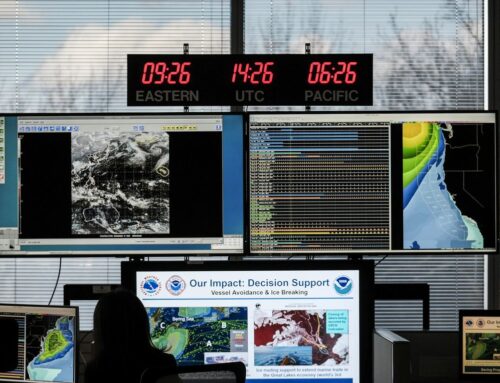National Grid quietly dropped its highly-praised geothermal pilot in Lowell
February 9, 2025
As the state gears up for more networked geothermal, experts say there are lessons to be learned here.

A promising alternative to natural gas has been taking root in Massachusetts — underground pipes and wells that tap into geothermal energy to heat and cool buildings across a neighborhood.
But late last year, around the time Governor Maura Healey was signing legislation that would take these projects out of the proof-of-conceptphase and into the mainstream, National Grid quietly scrapped one of three pilots planned in the state.
The pilot, planned for Lowell, had been a collaboration between National Grid, one of the state’s largest utilities, University of Massachusetts Lowell,and the city of Lowell.
Networked geothermal uses linked heat pumps and subterranean pipes that can harness steady underground temperatures to heat and cool multiple buildings off the same system.

The Lowell project was already underway — the buildings had been identified and test boreholes had been drilled in a university parking lot — when the work estimates started pouring in, and the financial picture became clear: the costs were just too high.
“We just did not think it was going to provide good value or make sense for our customers,” said Amy Smith, director of regulatory delivery and strategy for National Grid.
The project would have provided heating from renewable energy for 31 customers, including single and multifamily homes, a Lowell Housing Authority property, and two UMass Lowell buildings. Beyond providing cleaner energy, networked geothermal can also lower monthly energy bills.
In mid-December, the company told its partners and the potential customers about the decision to pull the plug, though no public announcement was made. The end of the pilot was first reported in CommonWealth Beacon last week.
Another pilot in Framingham, being developed by the utility Eversource, is already up and running, providing heating and cooling for an entire neighborhood, including public housing residents. The Lowell pilot would have been National Grid’s first foray into the technology.
Proponents of the project say they are disappointed — not only was this project expected to provide benefits for the community, but it was also expected to be an early proving ground for this nascent technology, which is expected to help the Commonwealth kick fossil fuels and reach its climate goals.
But the parties involved also say the experience isn’t a total loss — as with any failed experiment, there are lessons learned that will help progress continue.
In this case, there are a lot of lessons.
The size of the project is lesson number one: it was just too small and the customers that were going to be served were too spread out, said Zeyneb Magavi, executive director of HEET, a Boston nonprofit working to develop neighborhood-scale geothermal heating and cooling systems.
A stronger case for geothermal is in more densely-packed areas or in larger apartment buildings. Another project being developed by National Grid with the Boston Housing Authority, for instance, will serve 129 units across seven public housing buildings in Dorchester. That project is continuing to move ahead.
Lesson number two: Old buildings — the kind that Massachusetts has in spades — come with surprises.
“The challenges of all the mold and asbestos and faulty wiring and code violations of our old buildings … you try to do a geothermal network, and you hit that hard,” Magavi said.
Number three: You don’t really know what’s under the ground until you dig. In this case, what they found was water — a lot of it.
“Water in geothermal is usually good,” said Smith. “But what we found was not.” An abundance of underground water meant costly solutions would be needed.
Then, the final big lesson: Early forays into new technologies can cost a lot of money. Massachusetts has plans to build up a workforce and grow the supply chain for networked geothermal, but it’s not yet where it needs to be. But as the use of the technology grows, and the scale of projects increases, costs should go down.
Magavi points to a project in Colorado Mesa, Colo., as an example. There, a second network geothermal loop was put in that doubled the size of an initial loop — but at half the cost. Projections for a second loop in Framingham show the same thing: twice as big, half as expensive.
There’s another issue at play too, says Mary Wambui, chair of the state’s Energy Efficiency Advisory Council Equity Working Group. She says that the current structure, where utilities lead the project, needs to be reconsidered. “Should we put all of our hopes on a utility exploring a clean energy opportunity?” said Wambui, who is a Lowell resident. “What are we losing when we do that?”
Her proposal: elevate the role of communities and other interested parties.
Across the state, there are 12 networked geothermal projects being considered that are taking that approach, where community groups are taking the lead, said Magavi. That includes a proposed project in Salem led by a church pastor.
Ruairi O’Mahony, senior executive director for the Rist Institute for Sustainability and Energy at UMass Lowell, said while it’s disappointing the Lowell project isn’t going forward as planned, those lessons — and any others they are able to unpack — are part of what they sought from this partnership.
But he’s also not giving up on Lowell. “Even though the project as previously envisioned is not moving forward, there is now a fully designed and permitted network geothermal system on the UMass Lowell campus,” he said. “I think it would be a shame if we didn’t find some way to utilize that.”
Sabrina Shankman can be reached at sabrina.shankman@globe.com.
Search
RECENT PRESS RELEASES
Related Post




